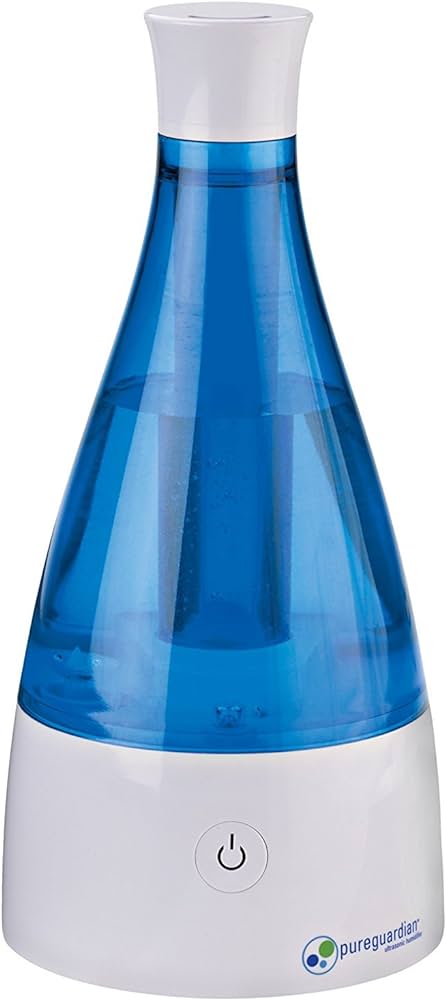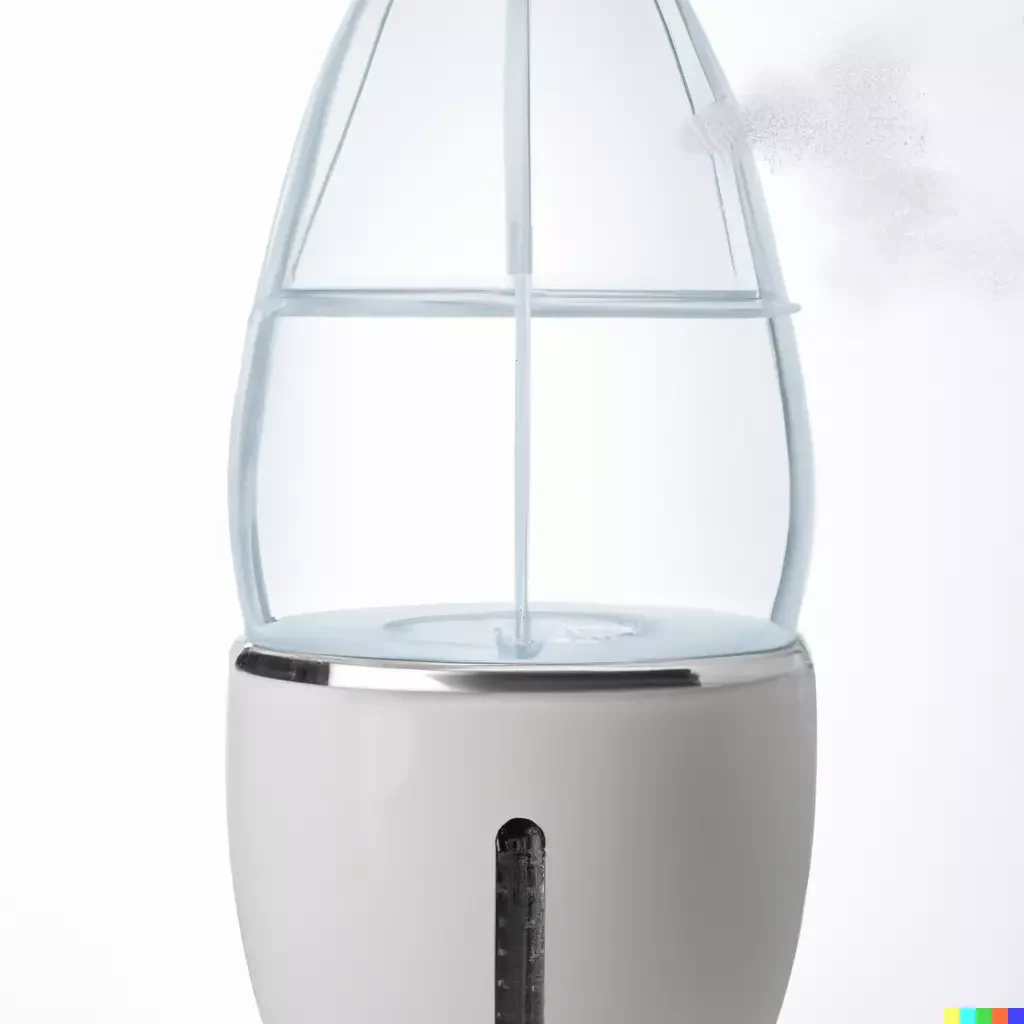A humidifier settings chart provides recommended humidity levels for different conditions. It helps maintain optimal indoor moisture for comfort and health.
Maintaining the correct humidity level in your home is crucial for both comfort and health, especially during the dry winter months or in arid climates. A humidifier settings chart is an essential tool that assists in achieving the perfect balance of moisture in the air.
By referring to such a chart, you can adjust your humidifier to the ideal setting, preventing issues such as dry skin, irritated sinuses, and static electricity. Moreover, by ensuring that you set the humidity at an appropriate level, you also safeguard your wooden furniture and musical instruments from damage caused by dry air. Proper use of a humidifier can also aid in alleviating symptoms of respiratory conditions and improving overall indoor air quality, making it a vital component of a comfortable and healthy home environment.
Importance Of Correct Humidifier Settings
Setting your humidifier correctly is a must. The right humidity level makes your home cozy and keeps you healthy. Too much or too little moisture leads to problems. A humidifier settings chart guides you to the ideal moisture balance. Let’s explore why proper settings matter.
Impact On Health And Comfort
Humidifier settings affect your well-being. Dry air can cause sore throats and itchy skin. High humidity might trigger allergies. Get the balance right for quality air.
- Right humidity means easier breathing.
- Keeps skin and hair moist.
- Helps prevent colds and flu.
Maintain a humidity level between 30% and 50%. This range keeps the air you breathe healthy. Use a hygrometer to check levels in your home.
Prevention Of Home Damage
Correct humidity protects your house. Wood floors and furniture crack with low moisture. Mold grows with too much. Stick to the humidifier chart to safeguard your space.
| Low Humidity | Ideal Humidity | High Humidity |
|---|---|---|
| Causes cracking and static. | Protects wood and electronics. | Invites mold and pests. |
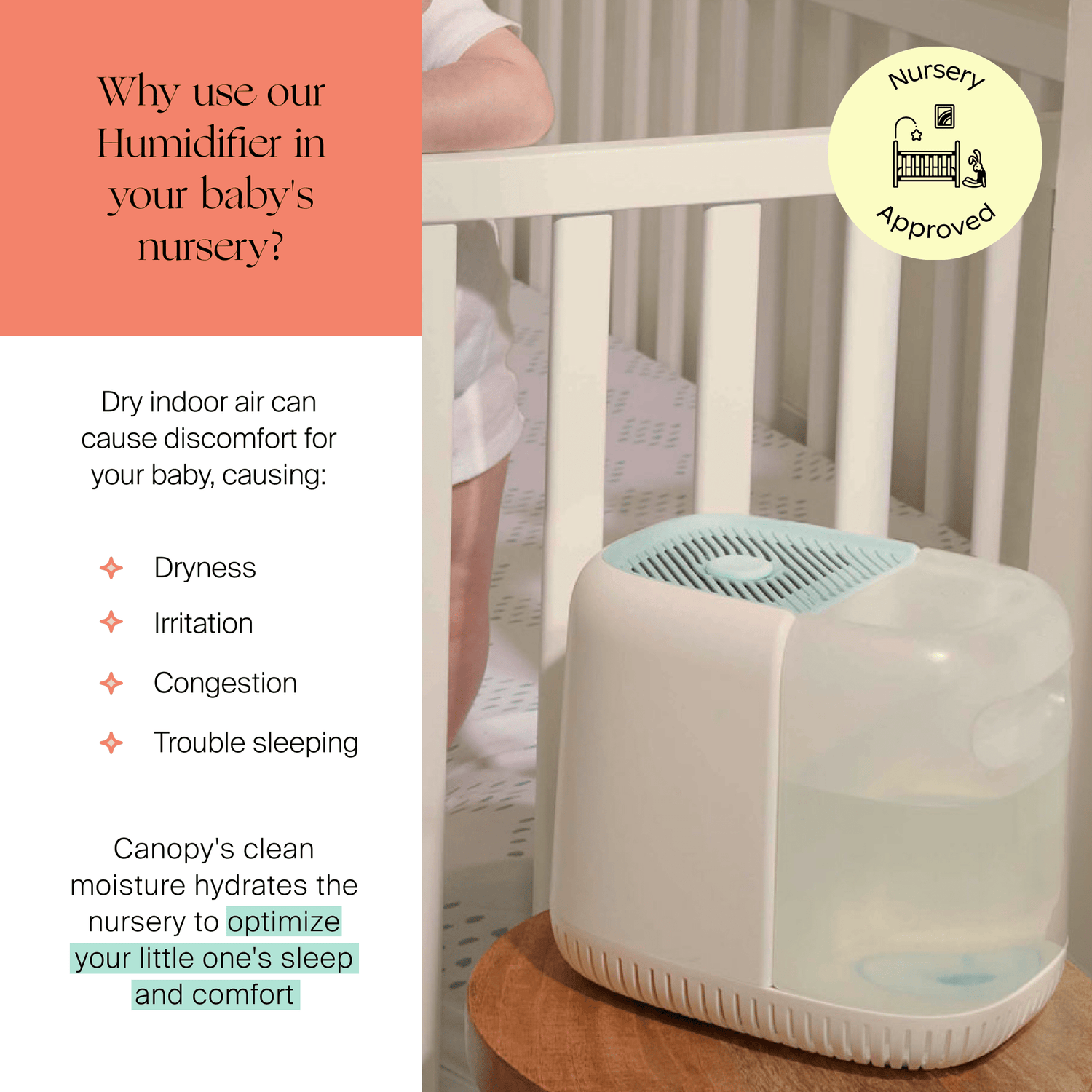
Credit: getcanopy.co
Understanding Humidity Levels
Balancing the moisture in your home is vital for comfort and health. Understanding humidity levels helps you use humidifiers efficiently. The right settings can ease health issues and protect furniture.
Ideal Humidity Range For Homes
The perfect humidity level for most homes is between 30% and 50%. Here’s why this range matters:
- Reduces health problems: Helps ease allergies and asthma.
- Protects your home: Keeps wood from warping and paint from peeling.
- Comfort: Makes air feel warmer in winter and cooler in summer.
A table showing the effects of different humidity levels is handy:
| Humidity Level | Effects |
|---|---|
| Below 30% | Dry skin, irritated sinuses, itchy eyes |
| 30% – 50% | Optimal comfort and health |
| Above 50% | Mold growth, dust mites, and mildew |
Measuring Indoor Humidity
To maintain the ideal range, measure your indoor humidity. You can use these tools:
- Hygrometer: A digital tool that reads humidity levels.
- Smart Thermostats: Some come with built-in humidity sensors.
- App-Connected Devices: Monitor your home’s climate with a smartphone.
Regular checks keep your air quality on track. Adjust your humidifier as needed based on your readings.
Seasonal Adjustments For Humidifiers
Understanding the right settings for your humidifier can make all the difference throughout the year. It keeps your home comfortable and healthy. Your humidifier works hard to balance moisture levels. But different seasons demand different settings. Let’s dive into how to adjust your humidifier with the seasons.
Winter Settings: Combatting Dry Air
In winter, indoor air tends to get dry due to heating systems. A low humidity level can lead to dry skin, irritated sinuses, and itchy eyes.
| Humidity Level | Setting (on a scale of 1-10) |
|---|---|
| 30%-40% | 7-8 |
| 40%-50% | 5-6 |
- Check humidity daily.
- Use a hygrometer to measure levels.
- Adjust the humidifier as needed.
Summer Settings: Managing Moisture
Summer brings warmth and higher humidity. Too much moisture can encourage mold growth and allergens.
| Humidity Level | Setting (on a scale of 1-10) |
|---|---|
| 40%-50% | 3-4 |
| 50%-60% | 1-2 |
- Maintain a balance between comfort and air quality.
- Reduce settings on humid days.
- Increase if air feels too dry.
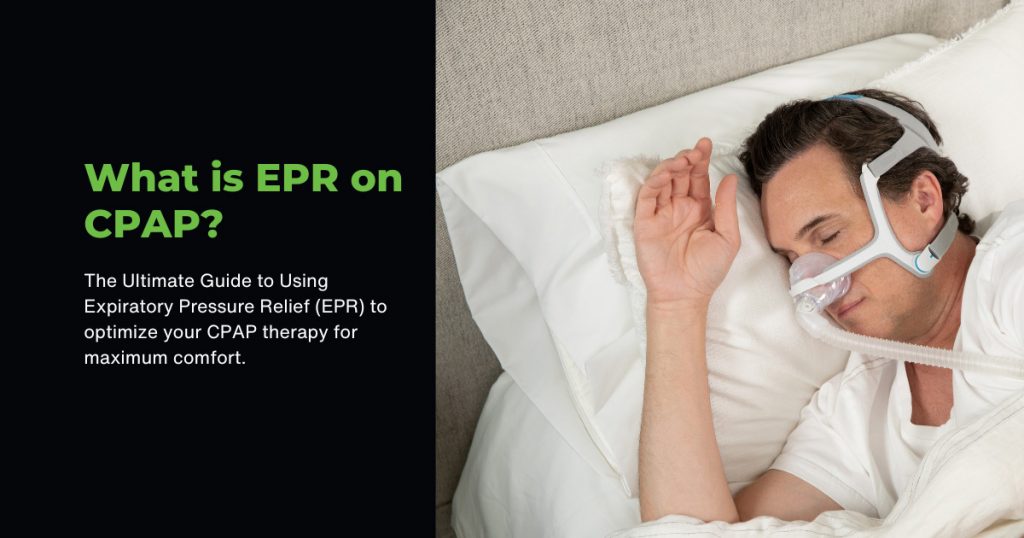
Credit: www.cpap.com
Types Of Humidifiers And Their Settings
Understanding Humidifier Settings is crucial for comfort and health. Each type of humidifier has unique settings to match.
Evaporative Humidifiers: Basic Operation
Evaporative humidifiers add moisture through a simple yet effective process. Here’s how they work:
- Water reservoir: Fill with clean water as directed.
- Wicking filter: Absorbs water from the reservoir.
- Fan: Draws air through the moistened filter.
- Evaporation: Air gains moisture and circulates in the room.
Settings typically range from low to high, adjusting the fan speed. For optimal humidity, set according to room size and humidity level.
Ultrasonic And Steam Humidifiers: Advanced Controls
Ultrasonic and steam humidifiers use sophisticated technology for precise moisture control. Discover their settings:
- Ultrasonic Humidifiers:
- – Generate mist using high-frequency vibrations.
- – Often have digital controls for setting exact humidity levels.
- – Features like timers and auto shut-off enhance functionality.
- Steam Humidifiers:
- – Boil water to create steam, adding warmth and moisture.
- – Allow for precise settings, often with hygrostats for humidity tracking.
- – Safety sensors prevent overheating.
Adjust settings based on the current room humidity and desired comfort levels.
Whether choosing an evaporative model with basic operation or ultrasonic and steam variations with advanced controls, select the right setting is vital for creating a comfortable living space. Ensure to read the manual for specific guidance.
Creating A Humidifier Settings Chart
Tracking and adjusting your humidifier settings just got easier. A Humidifier Settings Chart is a perfect tool. It helps to maintain the right humidity levels. With a custom chart, you say goodbye to guesswork. Let’s dive into how to create an effective chart.
Chart Design And Information
Designing a chart starts with knowing what’s important. First, understand the ideal humidity levels. These levels change with the seasons. A good chart reflects that. Here’s how to lay it out:
- Room list: Start with a column for each room in your home.
- Seasons: Add rows for different seasons or months.
- Target humidity: Place ideal humidity levels next to each season.
- Current settings: Reserve space to record your humidifier’s settings.
- Notes: Have a section for observations or changes made.
More rows as needed
| Room | Winter | Spring | Summer | Fall | Current Settings | Notes |
|---|---|---|---|---|---|---|
| Living Room | 30-40% | 40-50% | 40-50% | 30-40% | 35% | Increased 5% |
Using The Chart: A Step-by-step Guide
With your chart designed, it’s time to use it:
- Check the current room humidity with a hygrometer.
- Compare the reading with your chart’s target humidity.
- Adjust the humidifier settings if needed.
- Note any adjustment in the ‘Current Settings’ column.
- Observe how the room feels after changes.
- Update the notes with any new observations.
By following these steps, maintaining optimal humidity in your home is simple. Use the chart regularly for the best air quality. Remember, consistency is key for your comfort and health. Keep the chart handy for daily reference.
Maintenance And Safety Tips
Keeping humidifiers working their best involves regular upkeep. This section dives into how to maintain and operate humidifiers safely. Simple steps can prevent accidents and enhance performance. This guide ensures that your device remains a healthy addition to your space.
Regular Cleaning And Care
Humidifiers need consistent cleaning to prevent mold and bacteria growth. Build-up could release into the air, leading to health issues. Keep it safe and clean:
- Empty the tank after each use
- Rinse the tank with water before refilling
- Disinfect with a mild bleach solution weekly
- Dry all parts completely before reassembling
- Replace filters or wicks as recommended
Ensuring Humidifier Efficiency And Longevity
Optimal settings and proper care extend a humidifier’s life. Achieve the best performance:
| Task | Frequency | Instructions |
|---|---|---|
| Filter Replacement | Every 1-3 months | Follow the manufacturer’s guide |
| Deep Clean | Every 2 weeks | Use vinegar to descale |
| Room Ventilation | Daily during use | Keep air circulating |
Monitor humidity levels with a hygrometer. Keep levels between 30% to 50%. Safeguard against excessive moisture, which can lead to mold and allergens.
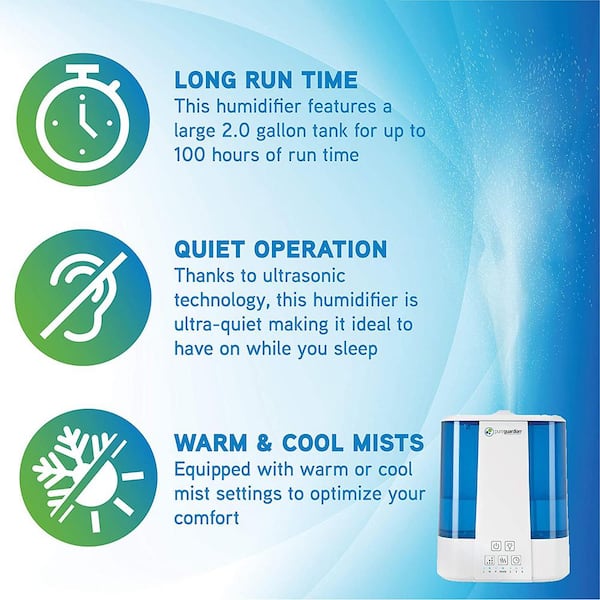
Credit: www.homedepot.com
Frequently Asked Questions Of Humidifier Settings Chart
What Setting Should My Humidifier Be On?
Set your humidifier between 30-50% humidity, aligning with outdoor temperatures to prevent condensation. Adjust settings based on personal comfort and indoor humidity levels.
What Percent Should My Humidifier Be Set At In Winter?
Set your humidifier between 30% and 50% in winter to maintain comfortable indoor humidity levels.
What Is The Ideal Number For Humidifier?
The ideal humidity level for a humidifier is between 30% and 50%. This range promotes comfort and helps reduce health issues related to dry air.
What Is The Best Humidifier Setting For Sleep?
The optimal humidifier setting for sleep typically ranges between 30% and 50% humidity. This level maintains comfort and alleviates dry air issues, promoting better sleep quality.
Conclusion
Navigating the right humidifier settings doesn’t have to be daunting. Our comprehensive chart simplifies the process, ensuring your home’s humidity is optimal for comfort and health. Bookmark this guide, and fine-tune your environment with confidence year-round. Let your space breathe the difference today!

